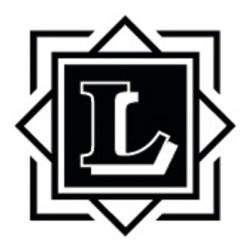Analysis
The claimants purchased a property in Cornwall in 1999. Their intentions were to create a discretionary trust of which they were to be the initial trustees, in favour of a class of beneficiaries consisting of their children and grandchildren and any further person or class of person nominated by the trustees. It was also intended that they should both be excluded from any possibility of benefit under the trust for inheritance tax reasons. In particular, they were concerned that there should be no reservation of benefit within the meaning of s102(1)(b) of the Finance Act 1986. This was made quite clear to their solicitor at the time she was instructed to prepare the trust deed. In the deed the claimants were defined as ‘the trustees’. The beneficiaries were defined as meaning the children of the trustees, their grandchildren, and any person or class of persons nominated by the trustees. For the purposes of that provision, a ‘person’ was defined as including a person anywhere in the world and also including a trustee. This was a provision that could cause reservation of benefit problems, but that was intended to be catered for by clause 7, which was headed ‘Exclusion of trustees’ and read:
‘Notwithstanding anything else in the trust, no power conferred by this trust shall be exercisable and no provision shall operate so as to allow trust property or its income to become payable to or applicable for the benefit of the trustees in any circumstances whatsoever.’
In 2009 the claimants sought advice as to the drawing up of wills and tax planning. Their attention was drawn to the fact that clause 7 referred to the trustees rather than the settlors and the trustees were defined as meaning the original trustees or the trustees of the trust for the time being, which meant that if the claimants retired as trustees, they would then no longer fall within the definition, and on a literal reading clause 7 would no longer exclude them from benefit. Steps were taken by the claimants to execute what was described as a rectification copy of the trust document, pre-dated 19 July 1999, incorporating the changes that it was hoped the court would, in due course, be persuaded to order by way of rectification, and an application to rectify the deed, so as to exclude the claimants as settlors from benefiting under the trust. HMRC is required to be notified by the Master, and made their position clear on 9 March 2010 when they wrote a letter saying they did not wish to be joined as a party and expressing no view about the merits of the claim, simply requiring certain cases to be drawn to the attention of the court.
Held (rectification ordered [21])
Rectification was available for unilateral transactions such as a declaration of trust. It was a discretionary remedy and the burden of proof was on the claimants to prove on the balance of probabilities, but to a convincing standard, that the trust deed as drawn contradicted their intentions. It was about putting the record straight and in the case of a voluntary settlement, rectification involved bringing the trust document into line with the true intentions of the settlor as held by him at the date when he executed the document. This could be broken into three requirements [15].
The first question was whether the parties had a prior intention up to the date of the trust deed. Here the claimants did have a common intention up to the date of the trust deed to place the property in trust for the benefit of their children and grandchildren and such other persons as the trustees might subsequently appoint as beneficiaries to exclude themselves from any possibility of benefit under the terms of the trust [16].
The second question was whether the trust deed as executed failed to represent the true intention of the parties. While it might be arguable that clause 7 did not in fact suffer from the defect which was suggested, the contrary was certainly arguable, and it appeared from the correspondence that HMRC had indicated, without committing themselves to the argument, that they saw some merit in it. The existence of real doubt was enough in a suitable case to permit the court to rectify a document.
The third and final question was what needed to be done in order to correct the possible mistake. A minimalist approach was appropriate where the purpose was, after all, to make a deed which had actually been executed tally accurately with the intention of the parties. For that purpose the minimum changes to achieve that object should be what the court normally ordered [17].
With regard to the execution of a rectification copy of the trust document, this was a misconceived attempt to pre-empt relief which could only be granted by the court, and that document should not be regarded as having any legal significance but it neither removed the court’s jurisdiction nor made it inappropriate to grant relief [21].
JUDGMENT HENDERSON J: [1] This is an application for rectification of a declaration of trust made on 9 July 1999 by Sir Ronald Claus Hampel and his wife, Jane, Lady Hampel, in relation to a property at Constantine Bay, Padstow in Cornwall. The name of the property is Little Clodiagh and the trust is known …Continue reading "Re the Hampel Discretionary Trust 1999 [2012] EWHC 2395 (Ch)"

